The colors in your bedroom can influence your mood and sleep. For example, blue promotes mental calmness and could help you doze off faster. Similarly, green has relaxing effects on the mind due to its association with nature.
While fully redesigning your bedroom may not be in the budget or match your vision for the space, small changes can have a big impact on how easy it is to drift off.
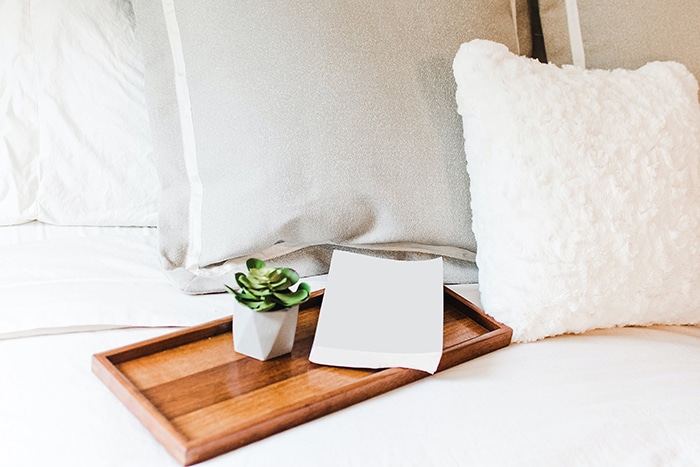
In This Guide
Best Colors | Pastels | Muted | Blue | Green | White | Light Purple | Pink | Worst Colors | Colored Lights
The Best Bedroom Colors for Sleep
Color psychology is widely used in marketing, sales, design, and other sectors, given that colors impact human behavior and emotions.
For example, red evokes feelings of love, anger, or power, according to Mental Health America (MHA). In some cases, it may also increase blood pressure and heart rate.
But when you go to bed, you want to chill and get into the mood for sleep. If your bedroom is painted red, you might end up feeling energized and restless.
Cooler colors like blue, green, purple, white, or beige may be a better choice, as these colors can help you relax and put your mind at rest.
Green, for instance, is associated with hope, serenity, calmness, and inner peace. Moreover, it may help alleviate anxiety in high-stress situations, suggests a recent study.
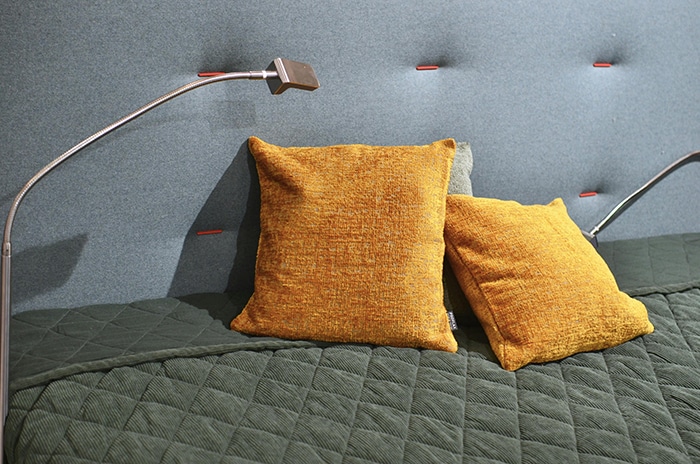
Researchers asked a group of volunteers to wear green-colored glasses for 15 minutes prior to a dental procedure. A second group had to wear clear glasses before undergoing the same procedure.
The first group experienced less anxiety, stress, and pain than the control group. It’s also worth mentioning that all subjects used to be afraid of the dentist. Yet, those who wore green-colored glasses felt more comfortable during treatment.
Similarly, the colors in your bedroom can either amplify or reduce stress, anxiety, and other emotional responses.
With that in mind, let’s take a closer look at the best bedroom colors for a restful sleep.
Pastel Colors
Pastel colors are lighter versions of their brighter counterparts, some of which are mentioned above (ex: pink, blue, purple, green).

Pastel colors can help reduce stress and set the tone for a peaceful night’s sleep. On top of that, they’re easy to incorporate into your space and have a timeless feel.
Popular pastel colors for a bedroom include:
- SW 6323 Romance (pastel pink)
- SW 9144 Moonmist (pastel blue)
- SW 6834 Spangle (pastel purple)
- SW6470 Waterscape (pastel green)
Muted Colors
Muted colors are also a great choice for a relaxing bedroom. Unlike pastels, which are light and airy, muted colors have a bit more depth to them, without being too saturated or overpowering for a bedroom.
Popular muted colors for a bedroom include:
- SW6023 Insightful Rose (muted pink)
- SW 9151 Daphne (muted blue)
- SW9157 Autumn Orchard (muted purple)
- SW 9130 Evergreen Fog (muted green)
Aside from these general color suggestions, let’s dive into specific hues that are great for bedrooms and how they work to help you get more sleep.
Blue
Blue is one of the most effective colors to help you fall asleep faster. But not all blues are good. For example, the blue light emitted by electronic devices can negatively affect your sleep and overall health—but more on that later.
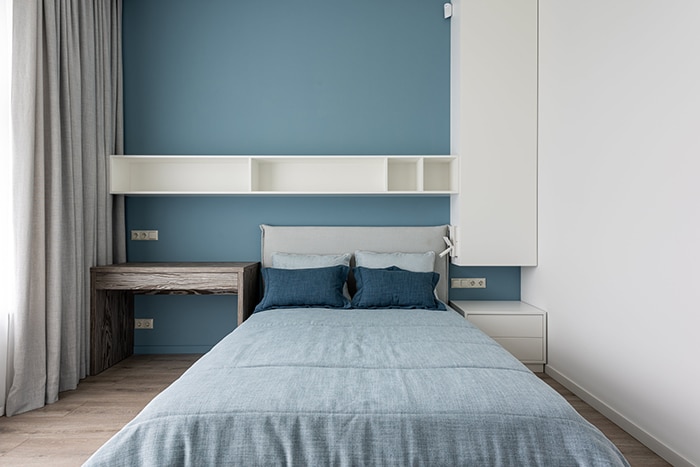
A bedroom painted blue can induce feelings of tranquility, making it easier to unwind at night. This color helps lower your heart rate, breathing rate, blood pressure, and body temperature, says the MHA.
Just make sure you opt for light shades of blue (which may alleviate insomnia) rather than dark shades. The latter may cause sadness or loneliness, affecting your mood and sleep quality.
Green
Most people associate the color green with nature and enjoy green spaces, whether indoors or outdoors.
For example, clinical research published in Landscape and Urban Planning found a direct link between green spaces, human health, and well-being.
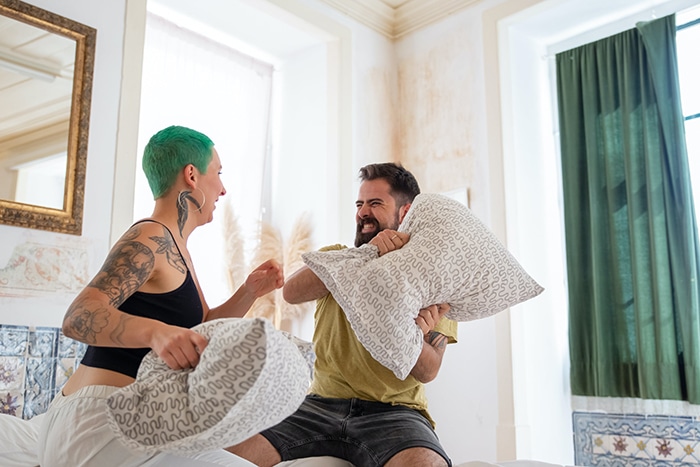
Other studies suggest that indoor plants, which are typically green, may help reduce stress, lower blood pressure, and boost cognition, among other benefits.
What you can do is paint your bedroom light green or bring in some indoor plants. Preserved lichen wall panels, green carpets, and nature-themed decorations should do the trick, too.
White
White is associated with purity and has a calming effect, making a bedroom feel bright and fresh. It also helps minimize distractions, allowing you to relax at bedtime. But be sure to balance white with other design elements, as too much white can trigger feelings of loneliness.
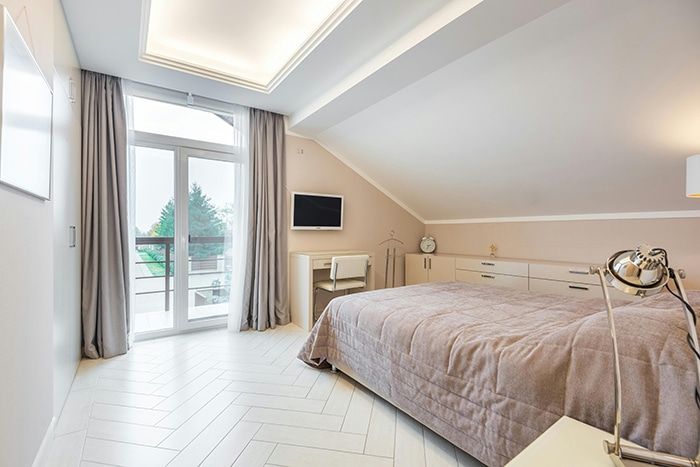
Your best bet is to use white in combination with light blue, green, and other soothing colors.
For example, you could paint your bedroom white and use wood panels, artwork, wall decorations, or accent pillows for a warmer ambiance.
Another option is to introduce neutral accent colors like beige, soft gray, or pastels to jazz up your room and prevent it from looking too stark.
Light Purple
Purple, especially lighter shades, evokes feelings of hope and well-being. This color also promotes calmness and relaxation, which may help you doze off faster.
Ideally, opt for soft shades of purple, such as lavender or lilac. These lighter tones can help create a tranquil atmosphere.

To reap the benefits, consider decorating your bedroom with lavender-scented candles and wall art featuring lilac flowers or sunsets. Pair purple with beige, gray, or white to balance the overall color scheme.
Go one step further and paint one wall in a soft purple hue. This can add a pop of color without overwhelming the room.
Pink
According to the MHA, pink may help alleviate anger and other negative feelings, such as resentment. Plus, it induces a state of calm and inner peace and can give you a more positive outlook on life.
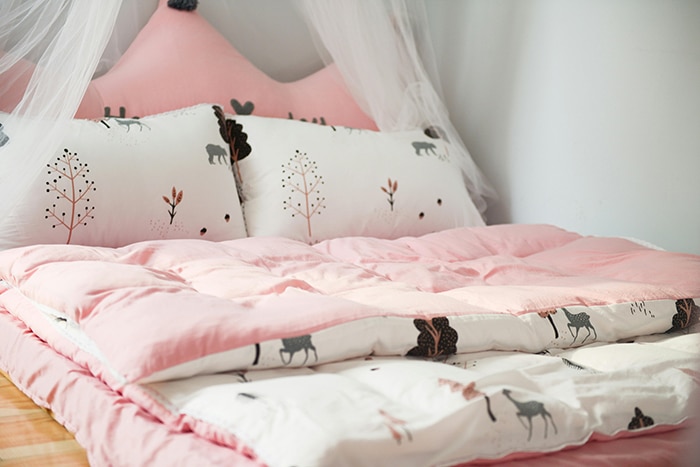
However, this doesn’t always mean you have to paint all of your walls pink. Instead, you can opt for a cozy blanket, throw pillows, or decor items in soft shades of pink.
A pink accent wall is another great way to give a room a splash of color without being overwhelming.
Worst Colors to Have in Your Bedroom
Mentally stimulating colors like red, orange, and bright yellow generally don’t belong in the bedroom. These are associated with high energy and may increase brain activity, making it harder to fall asleep.
Bright hues of pinks and greens, or neon shades of orange or purple can also challenging for a bedroom design, due to the high saturation of these colors.
Similarly, too much black or white can also make it hard to drift to sleep.
Overpowering swatches of black can be depressing and leave you feeling down in the dumps. Too much of an ultra-bright white can also reflect surrounding lights and make it harder to close your eyes.
Generally, the best strategy is to balance neutrals (like white, black, or gray) with rest-inducing colors (like pastels or muted hues).
There’s one exception though, for people who love bright colors.

According to sex expert Jess Wilde, painting your bedroom red, pink, purple, or black could lead to a better sex life. She also points out that green and other soothing colors tend to suppress sexual arousal.
But if you prioritize sleep, paint your bedroom in warm or neutral colors. You can always spice things up by switching to red silk sheets, purple candles, or colorful throw pillows.
Also, there’s nothing wrong with pairing stimulating colors like red or yellow with neutral or muted colors. As mentioned above, it’s all about striking the right balance.
What Color Light Is Best for a Restful Sleep?
The color of your lights matters, too, and, surprisingly, energizing colors like red and orange can contribute to better sleep. What matters most is their brightness.
Clinical research suggests that red light is the best choice for a restful sleep. Not only does it reduce the time needed to fall asleep, but it can also help you wake up feeling more alert.

- For example, scientists found that bright red light (10 lux or higher) is more likely to induce sleep than less intense red light.
- There’s also evidence that red light therapy can increase melatonin levels, improving sleep quality. Also referred to as the sleep hormone, melatonin regulates your body’s internal clock, or circadian rhythm.
- One study found that saturated red light may help with sleep inertia, a mental state associated with a temporary decline in mood and cognitive function upon waking up.
The research is mixed when it comes to other color lights, such as green or yellow. As far as blue light goes, it’s best to avoid it at bedtime.
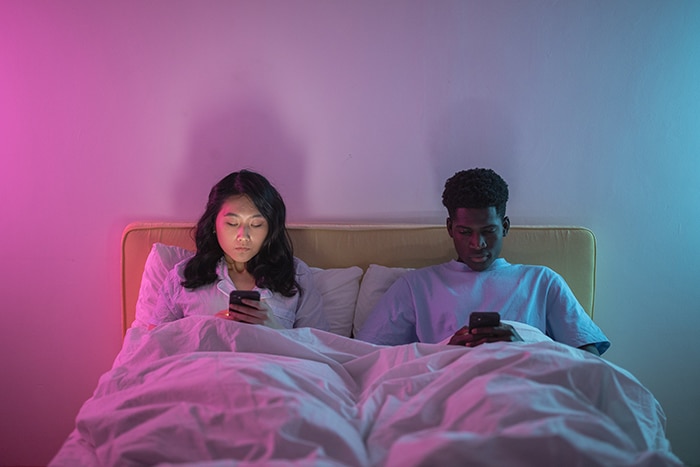
Blue light exposure can disrupt your body’s internal clock and affect your eyesight. Over time, it may damage the cornea, retina, and other ocular tissues, causing vision problems. These changes are often permanent.
With the right colors on the walls and in the decor, your bedroom can become one of your greatest assets to getting a good night’s rest. So take a warm bath, pop open a favorite book, and surround yourself with colors that ease your mind.
Dim the lights as the night goes on and before you know it, you will be fast asleep.


